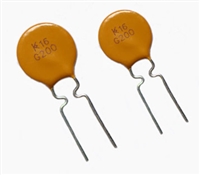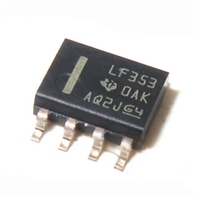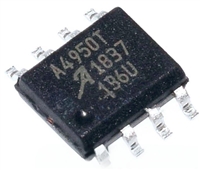| 是否无铅: | 含铅 | 是否Rohs认证: | 符合 |
| 生命周期: | Active | 零件包装代码: | BGA |
| 包装说明: | 0.80 X 0.80 MM, 0.40 MM PITCH, ROHS COMPLIANT, WLCSP-4 | 针数: | 4 |
| Reach Compliance Code: | compliant | ECCN代码: | EAR99 |
| HTS代码: | 8542.39.00.01 | 风险等级: | 1.62 |
| Samacsys Confidence: | Samacsys Status: | Released | |
| Schematic Symbol: | https://componentsearchengine.com/symbol.php?partID=421102 | PCB Footprint: | https://componentsearchengine.com/footprint.php?partID=421102 |
| Samacsys PartID: | 421102 | Samacsys Image: | https://componentsearchengine.com/Images/9/ADP150ACBZ-3.0-R7.jpg |
| Samacsys Thumbnail Image: | https://componentsearchengine.com/Thumbnails/1/ADP150ACBZ-3.0-R7.jpg | Samacsys Pin Count: | 4 |
| Samacsys Part Category: | Integrated Circuit | Samacsys Package Category: | Other |
| Samacsys Footprint Name: | BGA4C40P2X2_76X76X66 | Samacsys Released Date: | 2017-01-11 11:21:59 |
| Is Samacsys: | N | 可调性: | FIXED |
| 最大回动电压 1: | 0.16 V | 标称回动电压 1: | 0.105 V |
| 最大绝对输入电压: | 6.5 V | 最大输入电压: | 5.5 V |
| 最小输入电压: | 2.2 V | JESD-30 代码: | S-PBGA-B4 |
| JESD-609代码: | e1 | 长度: | 0.76 mm |
| 最大电网调整率: | 0.00315% | 最大负载调整率: | 0.027% |
| 湿度敏感等级: | 1 | 功能数量: | 1 |
| 输出次数: | 1 | 端子数量: | 4 |
| 工作温度TJ-Max: | 125 °C | 工作温度TJ-Min: | -40 °C |
| 最大输出电流 1: | 0.15 A | 最大输出电压 1: | 3.045 V |
| 最小输出电压 1: | 2.94 V | 标称输出电压 1: | 3 V |
| 封装主体材料: | PLASTIC/EPOXY | 封装代码: | VFBGA |
| 封装等效代码: | BGA4,2X2,16 | 封装形状: | SQUARE |
| 封装形式: | GRID ARRAY, VERY THIN PROFILE, FINE PITCH | 包装方法: | TAPE AND REEL |
| 峰值回流温度(摄氏度): | 260 | 认证状态: | Not Qualified |
| 调节器类型: | FIXED POSITIVE SINGLE OUTPUT LDO REGULATOR | 座面最大高度: | 0.66 mm |
| 子类别: | Other Regulators | 表面贴装: | YES |
| 技术: | CMOS | 端子面层: | Tin/Silver/Copper (Sn/Ag/Cu) |
| 端子形式: | BALL | 端子节距: | 0.4 mm |
| 端子位置: | BOTTOM | 处于峰值回流温度下的最长时间: | 30 |
| 宽度: | 0.76 mm | Base Number Matches: | 1 |
| 型号 | 品牌 | 描述 | 获取价格 | 数据表 |
| ADP150ACBZ-3.3-R7 | ADI | Ultralow Noise, 150 mA CMOS Linear Regulator |
获取价格 |

|
| ADP150AUJZ-1.8-R7 | ADI | Ultralow Noise, 150 mA CMOS Linear Regulator |
获取价格 |

|
| ADP150AUJZ-2.5-R7 | ADI | Ultralow Noise, 150 mA CMOS Linear Regulator |
获取价格 |

|
| ADP150AUJZ-2.65-R7 | ADI | Ultralow Noise, 150 mA CMOS Linear Regulator |
获取价格 |

|
| ADP150AUJZ-2.8-R7 | ADI | Ultralow Noise, 150 mA CMOS Linear Regulator |
获取价格 |

|
| ADP150AUJZ-3.0-R7 | ADI | Ultralow Noise, 150 mA CMOS Linear Regulator |
获取价格 |

|
 NTC热敏电阻与PTC热敏电阻的应用原理及应用范围
NTC热敏电阻与PTC热敏电阻的应用原理及应用范围

 GTO与普通晶闸管相比为什么可以自关断?为什么普通晶闸管不能呢?从GTO原理、应用范围带你了解原因及推荐型号
GTO与普通晶闸管相比为什么可以自关断?为什么普通晶闸管不能呢?从GTO原理、应用范围带你了解原因及推荐型号

 LF353数据手册解读:特性、应用、封装、引脚说明、电气参数及替换型号推荐
LF353数据手册解读:特性、应用、封装、引脚说明、电气参数及替换型号推荐

 A4950资料手册解读:特性、应用、封装、引脚功能、电气参数及代换型号
A4950资料手册解读:特性、应用、封装、引脚功能、电气参数及代换型号
